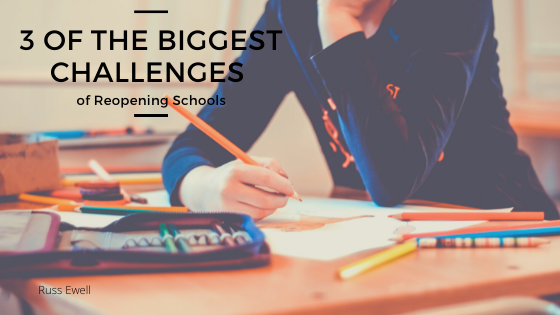As the US continues to mitigate widespread health effects resulting from the COVID-19 crisis, many schools are beginning to weigh the pros and cons of reopening educational facilities to students and teachers. But what can school administrators and educators do to keep their students safe at a time of great uncertainty?
Crisis Management on a Mass Scale
The problems currently facing schools are very complex and even contradictory: On the one hand, no one wants students to miss out on important learning experiences; on the other, many schools that have reopened within the United States have seen increases in COVID infection rates within their communities.
Here are just three key issues related to reopening schools and why many school districts are dealing with unprecedented problems related to providing their students with quality educations.
- Teacher and Student Health Outcomes
Of course, one of the biggest challenges inherent to reopening schools at this time lies in the transmission of COVID-19 itself. By their nature, schools are enclosed environments; it is natural that an outbreak can occur in such close quarters. Moreover, the Coronavirus tends to spread more quickly than diseases such as the flu: One student getting the disease could quickly become a problem for everyone in a school building.
- Parent Working Schedules
Sadly, one of the biggest issues related to reopening schools actually lies in not reopening schools. To wit, many parents will not be able to work if their children need to remain home to complete their school lessons. This financial conundrum puts added pressure on schools to risk potential outbreaks and makes the issue of school openings much more complicated. For many people, this situation creates an environment in which school administrators may feel undue pressure to organize in-person classes in the face of serious health concerns.
- Teacher Strikes
A third problem related to reopening schools can be found in the fact that a significant number of teachers may decide to go on strike if they feel that their health would be put at risk by hasty planning on the part of school administrators. Widespread strikes could lead to a serious shortfall in educators and could cause a generation of learners to miss out on essential life lessons.
At the end of the day, each of these issues is a moral bind that many administrators view as a no-win; indeed, each path forward involves some degree of risk and no “right” answer. For better or worse, however, the pressure is mounting for school leaders to make a tough call and to make it soon.
One way or another, COVID will be a once-in-a-generation test that will make or break the American educational system. Hopefully, schools and students will come through this stronger and better on the other side. One thing remains clear: Our schools need our support more than ever.

